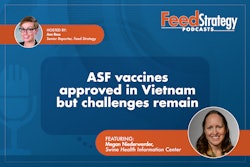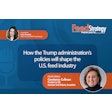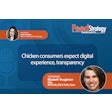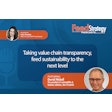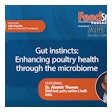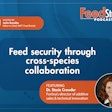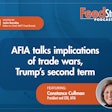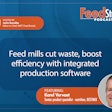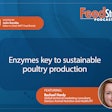
Fish meal alternatives can improve food security, sustainability (4:45)
Ann Reus: Hello and welcome to the Feed Strategy podcast. I’m your host, Feed Strategy senior reporter Ann Reus.
Ida Grong Aursand is senior business developer at SINTEF Ocean, a Norway-based institute that conducts research and innovation related to the ocean environment and aquaculture technologies. We recently spoke about new developments in fish meal alternatives and why those innovations are important. Here’s our conversation.
Hi, Ida. Thanks for being here.
Ida Grong Aursand: Thank you so much for having me.
Reus: Tell me about SINTEF and what you do there.
Grong Aursand: SINTEF is a research institute with almost 2,200 employees. It is the largest independent research organization in Scandinavia, and we are focused on technology, science and innovation. In SINTEF, I work within SINTEF Ocean which is part of the SINTEF Group. Our focus is on marine and maritime-related topics, and our main mission is to develop sustainable and innovative solutions for the ocean and maritime industries. And I’m responsible for the prioritized research area myself, and that is sustainable feed.
Reus: What are some new developments or innovations in fish meal alternatives that you’re excited about?
Grong Aursand: Well, we are working on several raw materials that can substitute fishmeal or soy in the future. We have categorized them into four areas: We have the harvested marine raw materials such as krill or Calanus or mesopelagic fish. These are high-value protein and omega-3 sources which could be exploited to a higher degree than it is today. We also have the land-based raw materials such as grass which actually has quite a lot of protein in it. It would also be interesting for the aquaculture sector. And we have the cultivated plants and animals, such as polychaetes or gammaridae. These are marine organisms that can grow on substrates such as sludge from the aquaculture industry or rest raw materials from vegetables, for instance. And at last, we have microorganisms such as microalgae, phototrophic or autotrophic. And we’re actually working with all these.
Reus: How do the nutritional profiles of these alternatives compare with fish meal?
Grong Aursand: These raw materials that have a marine origin, they are similar to fish meal in their nutritional profile, and we think they could be a good substitute to the fish meal.
Reus: Are these alternatives affordable, and can they be produced on the scale that’s needed?
Grong Aursand: As for any new novel feed raw material, the initial price level will be higher than fish meal – quite a lot higher. However, we believe that, if production is scaled, we can reach price levels and scales that will be relevant for the aquaculture industry. To reach the needed volumes of new sustainable raw materials for future aquaculture production, it is necessary to commercialize a broad portfolio of new feed raw materials.
Reus: What are the regulatory concerns around some of these ingredients?
Grong Aursand: When it comes to harvesting from the ocean, it is important that the fishery is regulated with quotas. For the cultivated organisms, the regulations are linked to the use of substrates. For instance, due to lack of research of biosecurity risks, it is not allowed to produce polychaetes on sludge from the aquaculture today, but if we use vegetable rest raw materials we are within today’s legislations. So it’s possible to produce polychaetes within the rules that are today.
Reus: And why is it important to find alternatives to fish meal?
Grong Aursand: The world needs more food, and the aquaculture industry can contribute with a sustainable protein source. Sustainable feed raw materials is the main bottleneck for the industry to grow. We need more marine feed raw materials, both as protein and omega-3 sources.
Reus: What developments do you hope to see in this area in the next 5 to 10 years?
Grong Aursand: I really hope we can look back and see that we were able to scale up and industrialize many of the solutions that we have been working with the last decade. For instance, increased sustainable harvesting of Calanus, single-cell proteins and gammaridae, to mention some.
Reus: OK, great, well thank you so much, Ida, for joining me.
Grong Aursand: Thanks a lot to you, Ann, for having me.
Reus: And thank you to the audience for tuning in. I’m Ann Reus for Feed Strategy.

